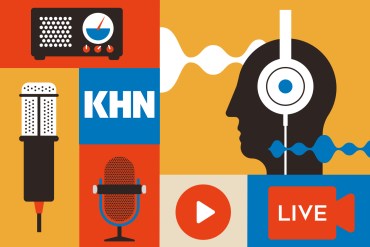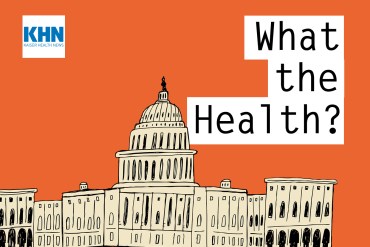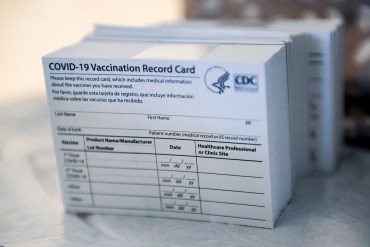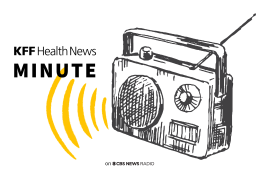Peligran avances contra el VIH por la lucha contra covid, en especial en el sur del país
El impacto exacto de una pandemia sobre la otra todavía está por evaluarse, pero los datos preliminares inquietan a expertos que hasta hace poco celebraban los enormes avances en el tratamiento del VIH.
Strides Against HIV/AIDS Falter, Especially in the South, as Nation Battles Covid
Public health resources have shifted from one pandemic to the other, and experts fear steep declines in testing and diagnoses mean more people will contract HIV and die of AIDS.
Censorship or Misinformation? DeSantis and YouTube Spar Over Covid Roundtable Takedown.
The Florida governor considers the pushback he received from the online video platform to be “Orwellian.” But the scientists featured at the event made specific statements YouTube deemed as “misinformation,” at odds with current public health recommendations for controlling the spread of the covid virus.
Listen: A Rookie Doctor Starts Her Career, Forged by the Pandemic
The latest episode of “America Dissected” features a conversation with Dr. Paloma Marin-Nevarez and KHN senior correspondent Jenny Gold. Gold documented the new physician’s first months on the job at a Fresno, California, hospital, caring for severely ill covid patients.
Dientes careados y cáncer avanzado, los efectos del atraso en la atención por covid
Los proveedores de salud están comenzando a ver las graves consecuencias de un año de atrasos en la atención preventiva y de emergencia a causa de la pandemia.
From Rotten Teeth to Advanced Cancer, Patients Feel the Effects of Treatment Delays
Health providers are seeing the consequences of pandemic-delayed preventive and emergency care, from longer hospital stays to more root canals.
Expertos en salud pública temen que los fondos desaparezcan cuando termine la pandemia
El Congreso ha enviado miles de millones a los departamentos de salud para luchar contra covid. Pero históricamente, esta financiación se acaba cuando termina la emergencia sanitaria.
Public Health Experts Worry About Boom-Bust Cycle of Support
Congress has poured tens of billions of dollars into public health since last year. While health officials who have juggled bare-bones budgets for years are grateful for the money, they worry it will soon dry up, just as it has after previous crises such as 9/11, SARS and Ebola. Meanwhile, they continue to cope with an exodus from the field amid political pressure and exhaustion that meant 1 in 6 Americans lost their local health department leader.
Snag a Vaccine Appointment, Then Face the Next Hurdle: How to Get There?
For some, a vaccine appointment a few hours away is no biggie. For others, it’s a major barrier to gaining protection from the coronavirus.
Journalists Unpack Patchwork Vaccine Rollout, Rapid Covid Tests and More
KHN and California Healthline staff made the rounds on national and local media this week to discuss their stories. Here’s a collection of their appearances.
The Shock and Reality of Catching Covid After Being Vaccinated
At least 5,800 people have fallen ill or tested positive for covid two weeks or more after being fully vaccinated, according to the CDC. “I now tell everyone, including my colleagues, not to let their guard down.”
KHN’s ‘What the Health?’: Pause and Effect on Covid Vaccines
Podcast panelists discuss a range of health policy developments, from the latest in the covid vaccination effort to the HHS budget, among other things.
Pandemia resalta la necesidad de clínicas de atención de urgencia para mujeres
Las clínicas de atención de urgencia especializadas en ginecología y obstetricia han comenzado a surgir en todo el país en los últimos años, y la pandemia de covid ha aumentado la demanda.
Si me recuperé de covid, ¿por qué tengo que seguir usando máscara?
Más de 120 millones de estadounidenses se han unido al club más selecto de la Tierra: los inmunizados contra el coronavirus. Cómo siguen las pautas de seguridad.
Misterioso remedio: vacunas ayudan a enfermos de covid de largo plazo
Es posible que las vacunas eliminen restos del virus o sus fragmentos, que interrumpan una respuesta autoinmune perjudicial o que, de alguna otra manera, “restablezcan” el sistema inmunitario.
Pandemic Highlights Need for Urgent Care Clinics for Women
For years, women with painful gynecological issues have faced long waits in ERs or longer waits to see their doctors. During the pandemic, women have increasingly turned to women’s clinics that handle urgent issues like miscarriage or serious urinary tract infections.
Mysterious Ailment, Mysterious Relief: Vaccines Help Some Covid Long Haulers
Scientists who study the post-illness syndrome are taking a close look at patients’ reports of this unexpected benefit of the vaccine.
Ask KHN-PolitiFact: I’ve Recovered From Covid. Why Do I Still Have to Mask Up?
The simple answer is that enough remains unknown about covid transmission, post-infection immunity and the threat of emerging variants that masks are still advisable.
Airports Step Up Mental Health Assistance as Passenger Anxiety Soars
As more people return to air travel, tension is mounting in airports nationwide. Atlanta’s Hartsfield-Jackson is among those that have responded to the pandemic-related stress and fear among passengers and employees by offering services such as meditation, chaplains and other help in their terminals.
Cuatro respuestas sobre el freno a la vacuna contra covid de Johnson & Johnson
Expertos en salud se preguntan si el freno a la vacuna de J&J a causa de seis casos de mujeres que desarrollaron coágulos luego de recibirla puede impactar negativamente en los esfuerzos de inmunización.





















